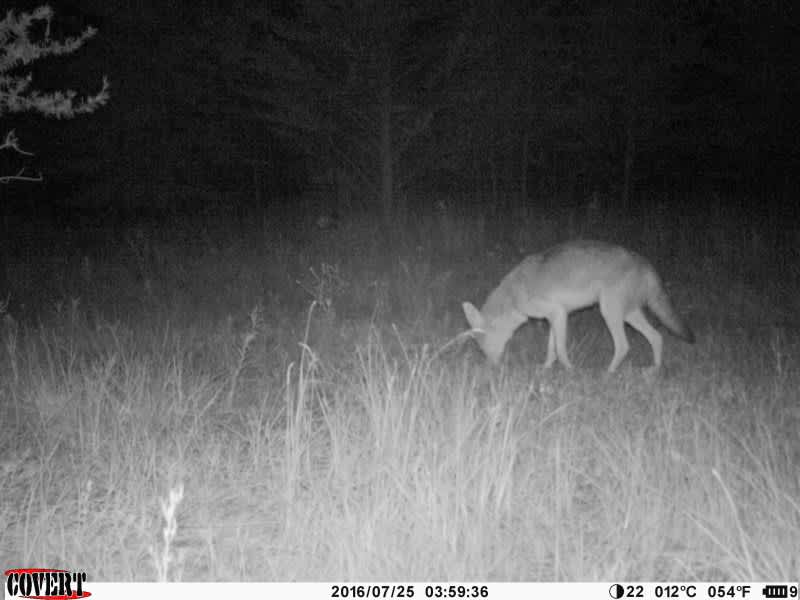Why Deer Hunters Should Care About Predator Numbers
Bernie Barringer 08.15.16

There are a lot of teeth in the woods these days. Across the upper Midwest and the West, wolf populations are at all time highs. In some areas, a pack of wolves can nearly wipe out an entire deer herd in a few months, then when the reward for their efforts diminish, they move to another area and start over. Wolves kill adult deer and, in some cases, they can wipe out an entire fawn crop.
Black bear numbers are increasing throughout the United States, especially in the formerly marginal areas of the East and Southeast. While bears don’t specifically target fawns, they do come across some, and they contribute to fawn mortality as opportunists.
Bobcat populations are stable to rising in some areas, increasing their numbers most notably in farm states such as Iowa, Illinois and Missouri. Bobcats have a small impact on fawn mortality compared to some other predators, but their impact contributes to the overall drop in fawn recruitment.
Coyotes learn to hunt and kill fawns in great numbers, and across the U.S. coyotes are the No. 1 predator on whitetail deer. Some studies have shown that high coyote populations are to blame for dismal fawn survival rates, and in some areas they take up to 80 percent of the fawns each year. Coyote populations have expanded greatly across the eastern U.S., with established and thriving populations found where there were no coyotes just a couple decades ago. In addition, coyotes are uniquely adaptable and are able to live in close proximity to humans as well as in wild areas. You will find thriving coyote populations from the mountains of the West to the suburbs of all cities in the nation.
State game agencies are alarmed that fawn recruitment rates have been steadily dropping over the past decade. Fawn recruitment rates are one of the most important measures of herd productivity. These rates offer important data to deer managers who are setting the harvest levels for antlerless deer, and for the number of bucks we can realistically have in the population.
By the Numbers
In order for deer populations to remain stable, the population must recruit one fawn for each adult doe. That means a fawn recruitment rate of 1.0-1.2 is ideal to have a healthy deer herd. Yet fawn recruitment rates are below 1.0 in most states, which means deer populations are dropping. According to the Quality Deer Management Association (QDMA), Florida, Virginia and Arkansas are reporting fawn recruitment rates of only .40 and .41. Oklahoma had a dismal rate of .30 in 2015. South Carolina, Maryland, Wisconsin, Maine and Illinois are also seeing significant declines in fawn recruitment.
This news is not good for deer hunters who desire a thriving deer population and good hunting opportunities into the future. The biggest factor that influenced fawn recruitment rates is predators. So in short, the predators are eating your venison.
No one who cares about a balanced ecosystem wants to completely eliminate predators. But high predator populations are a sign of an ecosystem that is out of balance and needs some adjustment. There isn’t much we can do about the large numbers of wolves in Minnesota, Wisconsin and Michigan at this point because the courts have trumped sound wildlife management by taking the ability to manage the wildlife out of the hands of the managers and putting it in the hands of the emotionally charged public debate. We must work hard to overturn these court rulings so we can effectively manage predator populations in a way that benefits all wildlife and a balanced predator-prey relationship.
With the issue of growing bear, coyote and bobcat populations, there is more we can do. States with increasing bear populations need to issue more tags to keep the numbers of bears in check. Wisconsin recently added to the number of bear tags available in some areas of the state, a big step in the right direction. Minnesota has been reducing tags as the bear population surges, and only in 2016 did they add a few more tags in some zones. This state needs to add more tags again in 2017. States also need to be aware that they can allow practices that help increase hunter success rates. Severe restrictions on baiting is not the way to go, for example. Success rates in Minnesota for bear hunters is only at about 30 percent. The state needs to take steps to increase that by increasing the length of the preseason baiting and putting more bear hunters in the woods.

The growing coyote populations are largely due to poor fur prices. Trappers don’t put in as much effort when the value of coyote pelts drops. But deer hunters who care about the deer herd need to take steps to reduce coyote populations by trapping and hunting the predators themselves, hiring trappers to take coyotes off their property, or offering other incentives to kill coyotes. In areas where large coyote populations are particularly troublesome, especially on public land, bounties should be offered by state and county wildlife agencies. Coyotes are the easiest of the major predators to control, and hunt clubs, landowners and governments need to get on the ball in doing so.
So yes, there are a lot of teeth in the woods these days. If we are going to enjoy the quality of deer hunting that we have for the past few decades, something must be done about it. Each deer hunter must do his or her part.

